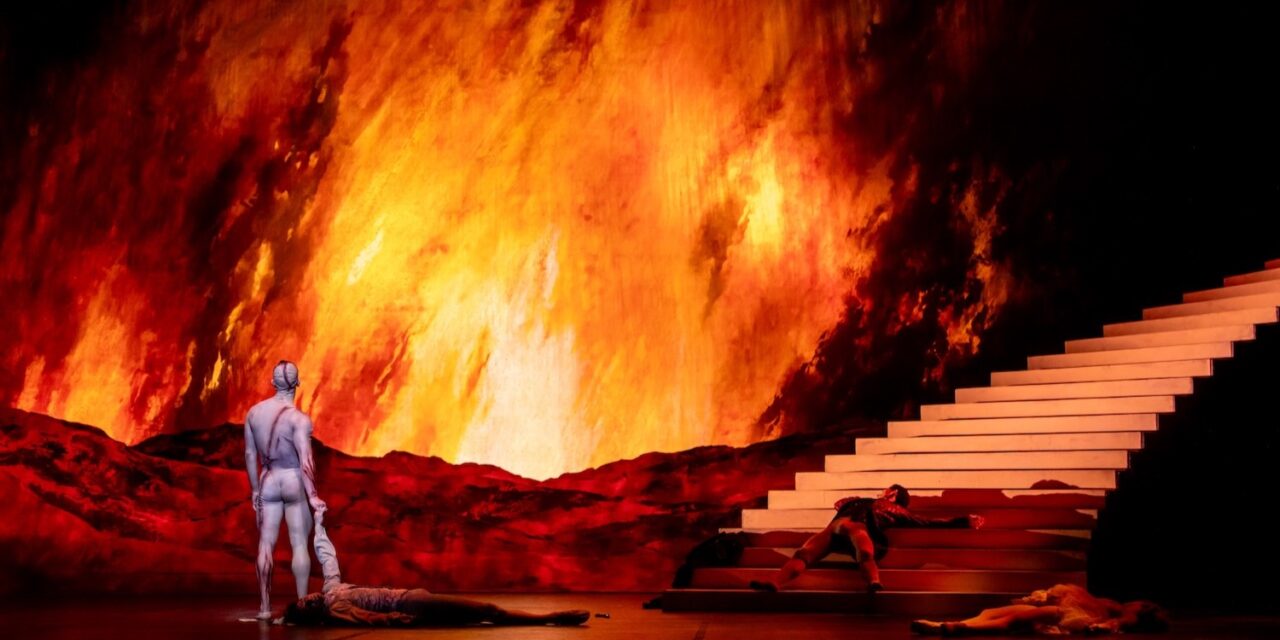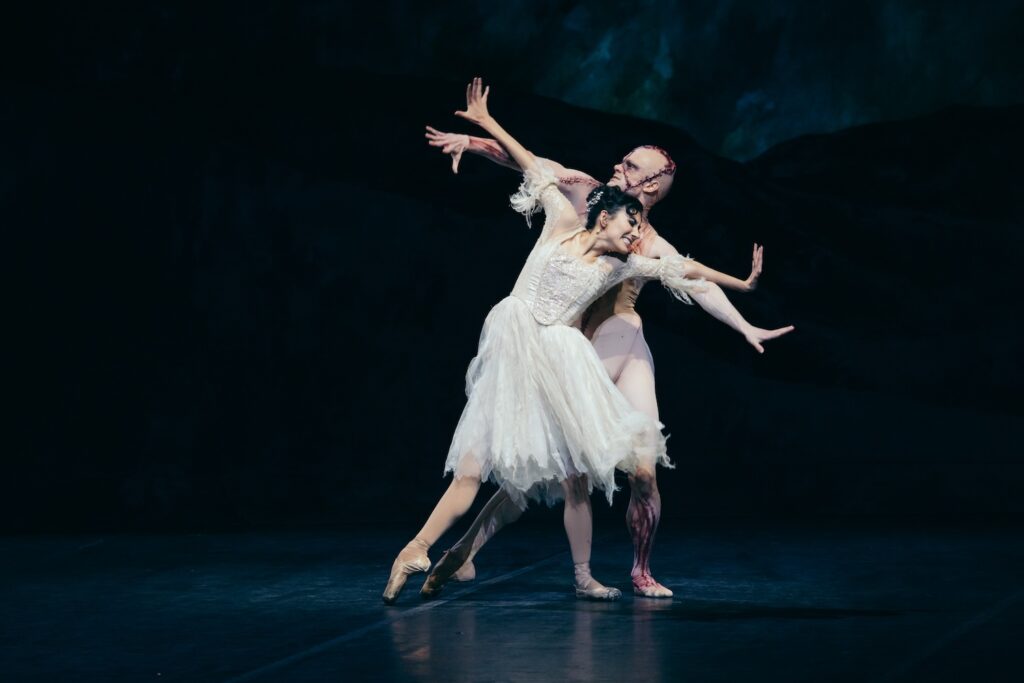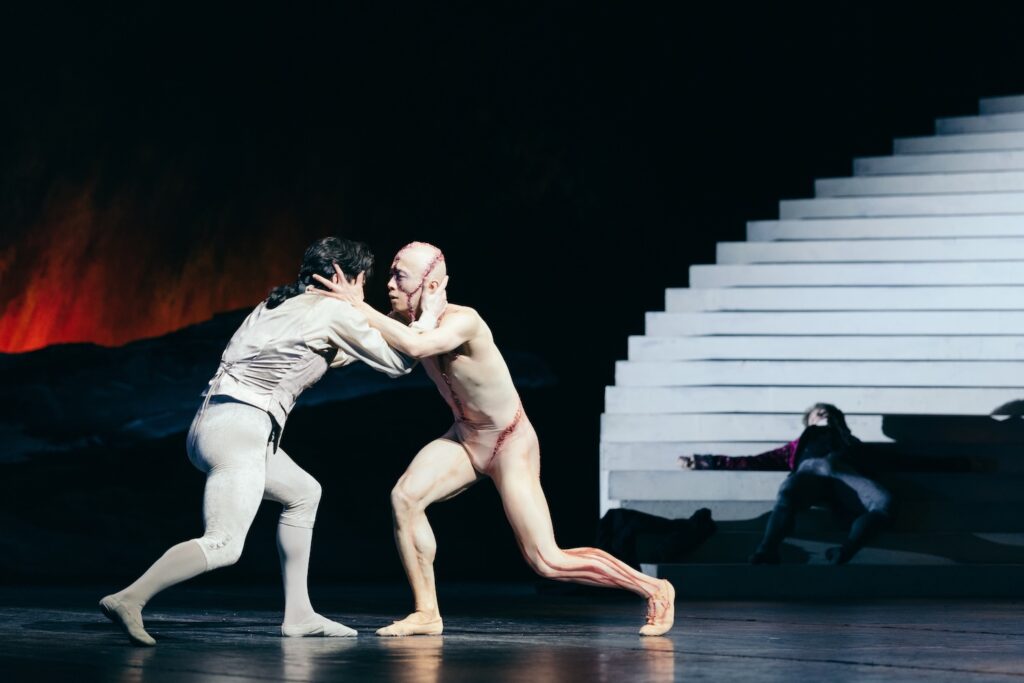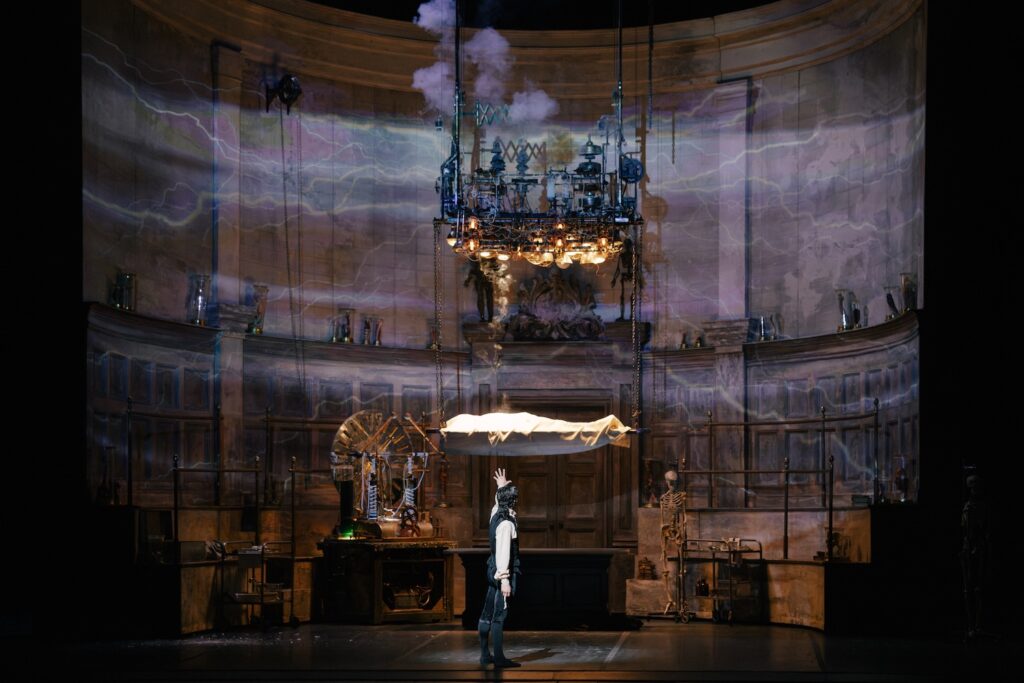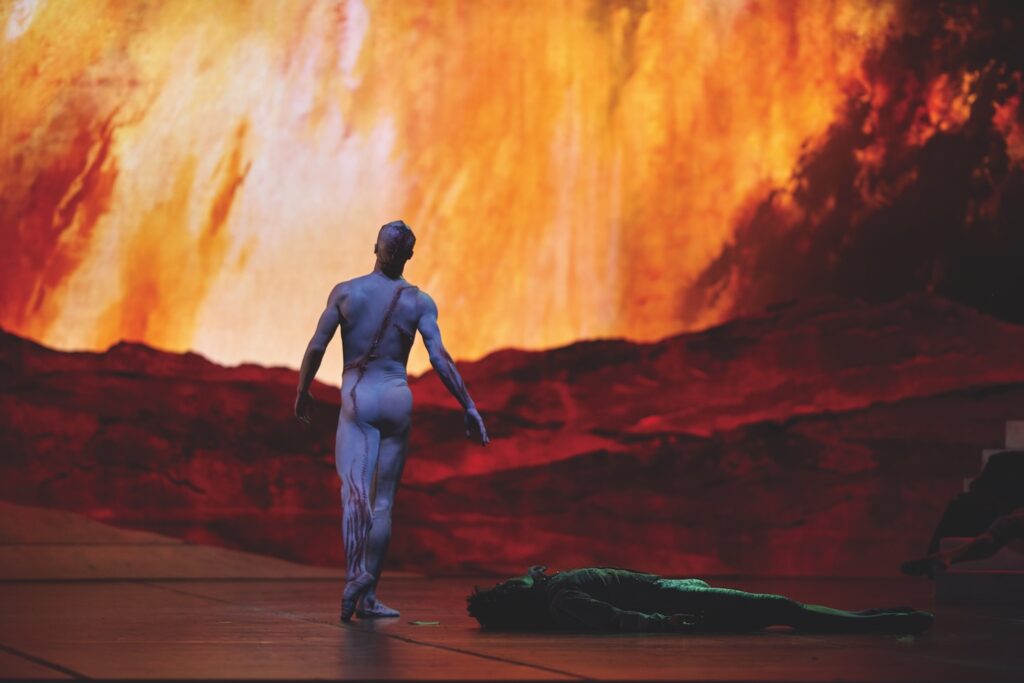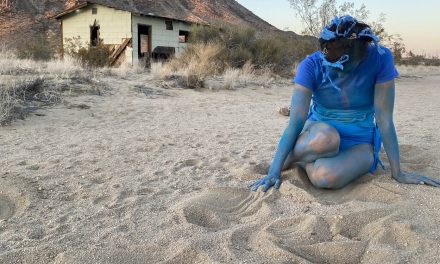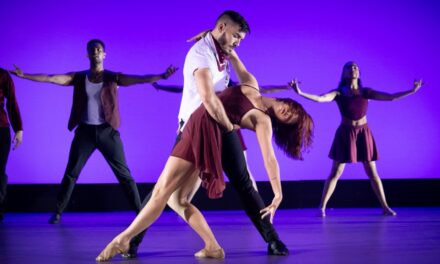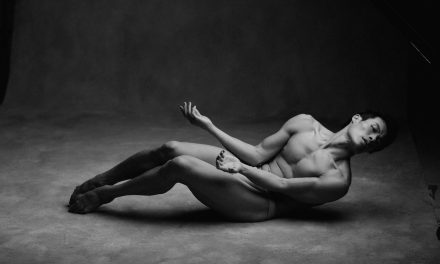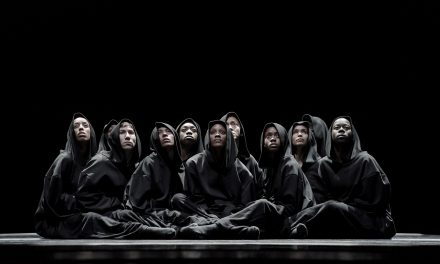As the Halloween season gathers speed, San Francisco Ballet brings its gothic horror ballet “Frankenstein” to Segerstrom Center for the Arts for five performances (October 2-5, 2025) with stunning dancers, spooky sets, rock concert-worthy pyrotechnics, and live music from the Pacific Symphony. Co-commissioned by Britain’s Royal Ballet and San Francisco Ballet, the late choreographer Liam Scarlett envisioned Dr. Victor Frankenstein’s creation as a stitched together humanoid creature (a far cry from a lumbering Boris Karloff) and found in the romance between Victor and Elizabeth (an orphan adopted by Victor’s family), ample reason for multiple breathtaking pas de deux in retelling Mary Shelley’s cautionary story of scientific pursuit with lethal unintended consequences.
The critically successful 2016 London premiere was followed by the San Francisco Ballet premiere in 2017 with SFB principal dancer Joseph Walsh in the role of Victor Frankenstein. Walsh returns to the role of Dr. Frankenstein for this visit. He also staged the ballet for last season’s highly praised SFB performances and the upcoming shows.
Dance writer Ann Haskins spoke with Walsh about how injury led to becoming the ballet’s stager, how he navigates dancing amid explosions and fireworks, and this ballet’s growing potential as a seasonal event, with audience members taking a costume page from “Rocky Horror Picture Show”. (The interview has been edited for length and clarity.)
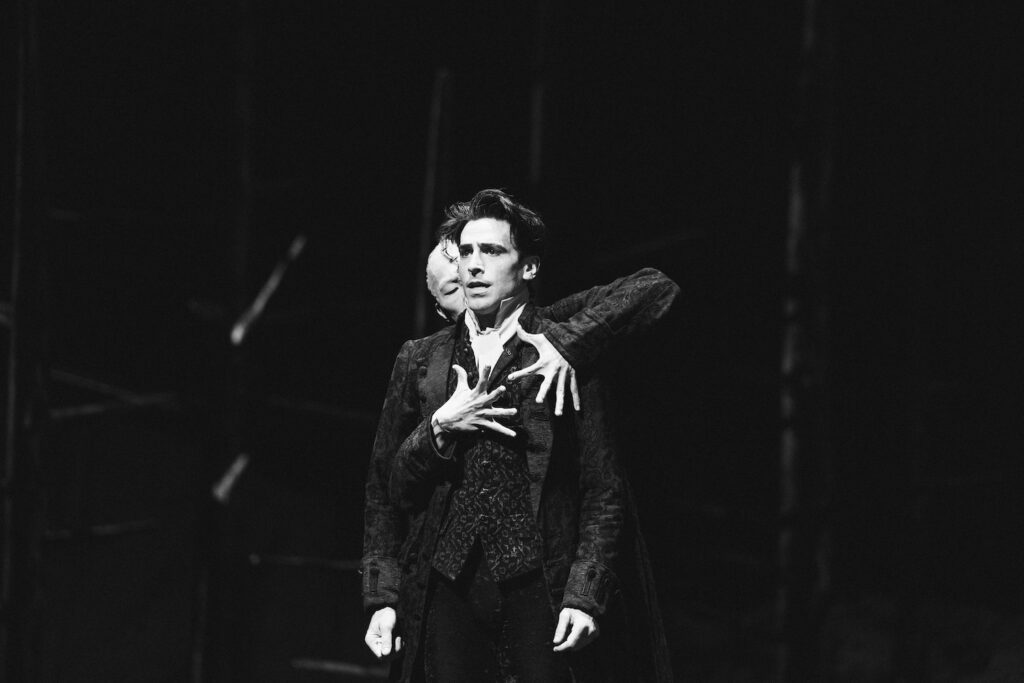
Joseph Walsh as Victor Frankenstein and Wei Wang as the Creature in Liam Scarlett’s “Frankenstein” – Photo by Lindsey Rallo.
Haskins: I understand you and other San Francisco Ballet dancers were involved with the ballet’s creation.
Walsh: When he was first starting to choreograph “Frankenstein” in 2015, I, my wife Lauren Strongin, and several others went to London and worked with Liam for about three weeks. We helped to create pas de deux and a lot of group scenes while we were there. When we returned to London just after the world premiere in 2016, Liam already was talking about changes and cuts he wanted to make, so San Francisco’s version in 2017 became significantly shorter, more concise, and a clearer vision of most imperative parts of the story. From those conversations of what worked and what didn’t, having seen it from early stages, then dancing it, and now coming to it as both a dancer and stager, I feel a real kinship to the ballet.
Haskins: How did you move from dancer to stager?
Walsh: The second time San Francisco staged “Frankenstein” in 2018, I was injured. I was just watching and helping other lead couples with the partnering. With the rush to get ballets up for the spring season, I could see they were shorthanded on coaches. Since I knew the ballet and wasn’t able to dance, I asked Liam if I could help. That was my first experience staging “Frankenstein”.
A few days after Liam passed away in 2021, his mother Debbie rang us, and in a quite emotional call, told us that Liam had left some wishes regarding his work. He wanted Lauren and me in the U.S. along with two others in Europe to share responsibility for his trust and to stage his ballets. The first major project we mounted was “Frankenstein” at the Joffrey with its director Ashley Wheater. The Joffrey’s “Frankenstein” in 2023 was a big success. Then last year we did the staging at San Francisco Ballet as part of the season, and it was brought back at the end of the season as one of the Encore shows. Even though it was spring, we had audience members at almost every show showing up in some really great costumes with their platforms and their bolts. They did not look like the character in the ballet, but we got the idea, sort of “Rocky Horror Picture Show” goes to the ballet. We would welcome such costume efforts while we’re at Segerstrom.
Haskins: In addition to this “Frankenstein”, there are a number of Dracula ballets around town this month. Is gothic horror ballet becoming a fall equivalent of “The Nutcracker” for ballet companies?
Walsh: I think so. Every other company that’s asking for “Frankenstein” wants it for the fall. I’m thrilled that we’re finally getting to do “Frankenstein” in October. This is something that I’ve really been wanting to do, but since the opera has the theater in the fall, San Francisco Ballet’s season starts with “The Nutcracker” in December which puts “Frankenstein” as part of the Spring repertory season. I think “Frankenstein” appeals in the same way that horror stories in movies are consistent business, especially around October. People like to feel their pulse race.
Haskins: The same thrill as a roller coaster?
Walsh: It is. Often I will use the image of a roller coaster for some of the movement phrasing: “Okay, this is the way up the hill. We’re quick, quick, quick, quick, quick, quick. Once we get to the top, we have a nice little break. Then we’re going to roll. We’re going to flip. Then the brakes are on, and we finish!” I also use tumbling passes or a gymnast on the high bars to describe this choreography, especially the partnering choreography. You have to find that rhythm and each turn that leads directly into the next step, into the next step, into the next step, and then you can have your nice finish at the end. If you take one misstep, or if you think twice about the musicality of this scene, the whole momentum will just plummet.
Haskins: How do you juggle being the stager at the same time you are a lead dancers?
Walsh: Yes, I wear many hats all at once. Often the dancing hat is the last one that I put on. I spend most of the day just working with other couples, setting scenes and ensuring that the story is being delivered the way it needs to be, and improving upon certain aspects that have changed as the piece has evolved over the years, always using our best judgments. There’s a lot of problem solving each time that you set a ballet that makes it smoother, much more efficient and often can lead to better storytelling. When you have up to 90 people in a room for a run through, just to get everyone on your side is a big ask, especially when the week before I sat with them making jokes. Yet as a dancer, my process from the front of the room has an empathy that informs how I think everyone should be participating, acting, and working towards the goal.
Haskins: Has your Victor Frankenstein changed as a result of staging the ballet?
Walsh: Yes. As I gained a deeper understanding of the other characters, I found gaps in my interpretation of my character, moments where I wasn’t quite tapped in as much as I thought I was. Looking back on it, my original approach was a certain way because I thought the character was feeling a certain way. I’ve found that being able to understand the characters around me has really helped to inform where I put the energy in Victor.
Haskins: Is there a particular scene or section that you have applied that to?
Walsh: I would say, in the third act, when you enter into ‘the space,” there’s this sense of unknowing. As the audience, we don’t know whether we’re in Victor’s head or whether experiencing some kind of diluted memory of a real occurrence, a kind of other worldliness. I found that more attention on the group was needed at Victor and Elizabeth’s wedding, more focus on how the group is responding while the creature is dressed in red and going in and out, intertwining with the crowd. Before, I felt I was overacting in Victor’s paranoia to all that goes on and to whether the creature is a vision or in disguise. I find that having the energies of the whole room engaging in that paranoia, helped bring the third act even more to life, creating a space where it’s a little creepy, a little glamorous, a little bit more abstract. The audience draws more power from the entire group and that kind of group narrative is why the corps is so important in every ballet. I don’t want to have any spoilers, but it builds to a murder fest. Well, it is “Frankenstein”.
Haskins: The production is known for its elaborate sets and special effects including those pyrotechnics, a sort of volcanic eruption. How do you dance with that going on?
Walsh: I would say the end of the first act is much more in tune with Disneyland. Liam was a massive Disney fan. He had this really great affection for that side of entertainment. I think those effects scratched that itch for Liam, and for anyone that wants to see something that they’ve never seen on the stage with somebody in ballet shoes. However, before the show we have to have a full hour of pyrotechnics safety and other safety prep. Before the show, we raise the creature up and down on the platform where they come to life.
A figure walks toward fiery backdrop
San Francisco Ballet’s “Frankenstein.” Photo by Erik Tomasson
Haskins: And the explosions?
Walsh: I think there’s something like… I’m sure there’s a number in my rundown, but it’s way up there in terms of how many explosions you’re hearing and seeing. There’s also strobing and projection. A lot going on. And there are lots of safety precautions, including we’re not supposed to wear too much hairspray, just in case.
The last time around, I finally found the joy of getting to experience that, rather than the fear of “is that gonna throw me off my leg, or am I gonna slip on the fake glass that we shatter?” That did happen last season. Opening night I fell when I slipped on some fake glass I had thrown too far downstage. Also, seeing it from the front so many times, I find I just can’t wait to get up there dancing, to be part of the scene. It’s so fun, especially the last scene on John McFarland’s set, just one of the most immersive sets I’ve ever performed on. It’s almost imperceptible how the backdrop starts to unroll, and it’s just lighting and his painting, hand painted sets by him that he designed to change hue as the emotions intensify. It all feeds into the performance of the artists on stage. And it’s a testament to the team Liam was able to create and the people that he trusted.
Haskins: Has the Segerstrom casting for the three leads been set?
Walsh: Yes. Thursday and Saturday evening I am Victor, Frances Chung is Elizabeth, and Wei Wang is the creature. Saturday matinee Estaban Hernandez is Victor, Jasmine Jimison is Elizabeth, and Cavan Conley is the creature. Friday evening and Sunday matinee Max Cauthorn is Victor, Sasha de Sola is Elizabeth, and Joshua Jack Price is the creature.
We just had a run through with Max, Sasha, and Josh who danced in different casts last spring. After a few weeks of rehearsing and really pushing through, it suddenly meshed. When there’s a moment like that, I just appreciate so deeply what everyone’s putting into it. I had to sit there and take a moment. I really could not speak. It felt like Liam was there with us.
San Francisco Ballet in Frankenstein with the Pacific Symphony at Segerstrom Center for the Arts, 600 Town Center Dr., Costa Mesa; Thurs.-Fri., Oct. 2-3, 7:30 pm, Sat., Oct. 4, 2 & 7:30 pm, Sun., Oct. 5, 1 pm, $59-$179. San Francisco Ballet – Frankenstein
Written by Ann Haskins for LA Dance Chronicle.
Featured image: San Francisco Ballet’s “Frankenstein” – Photo by Lindsey Rallo.

